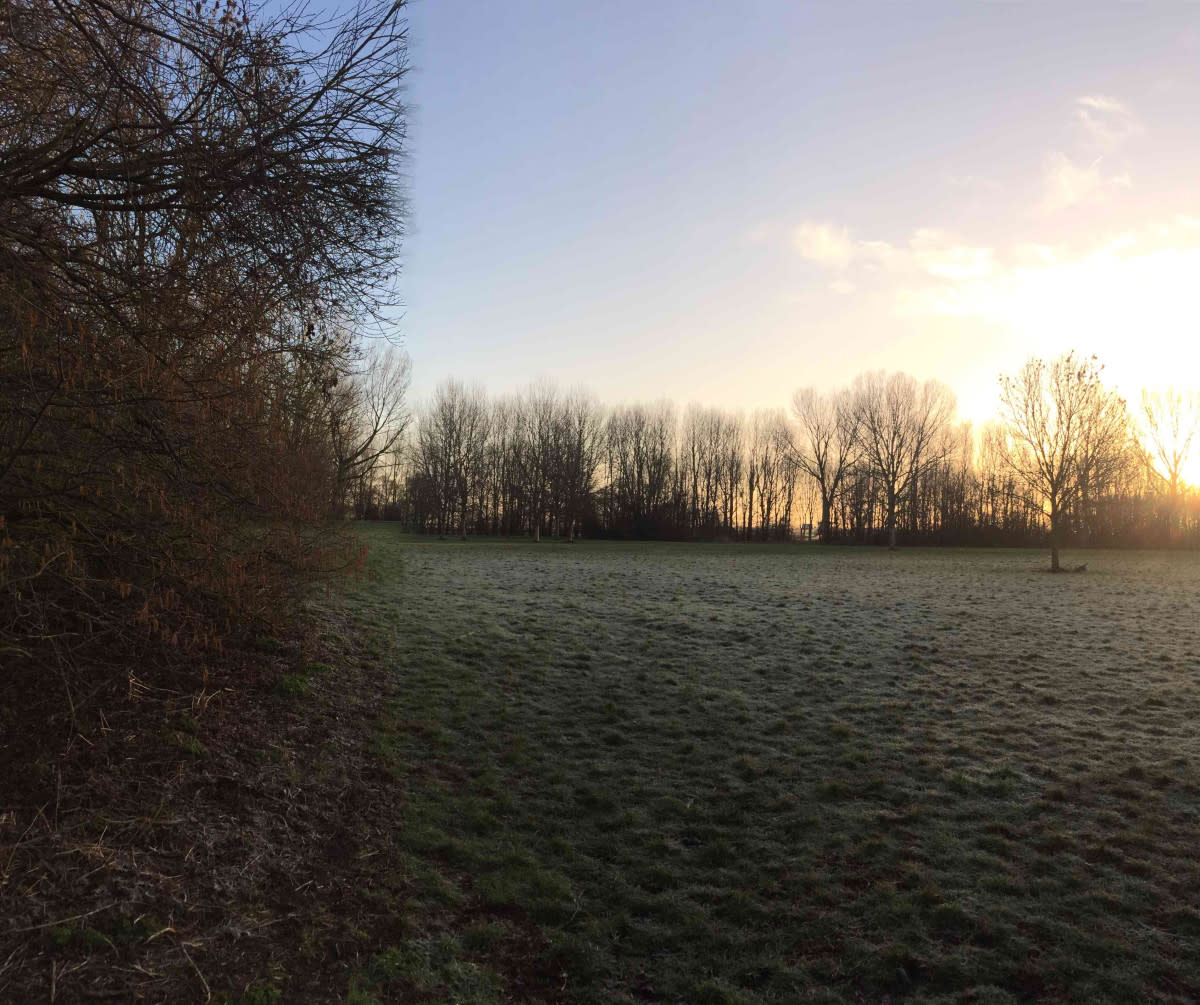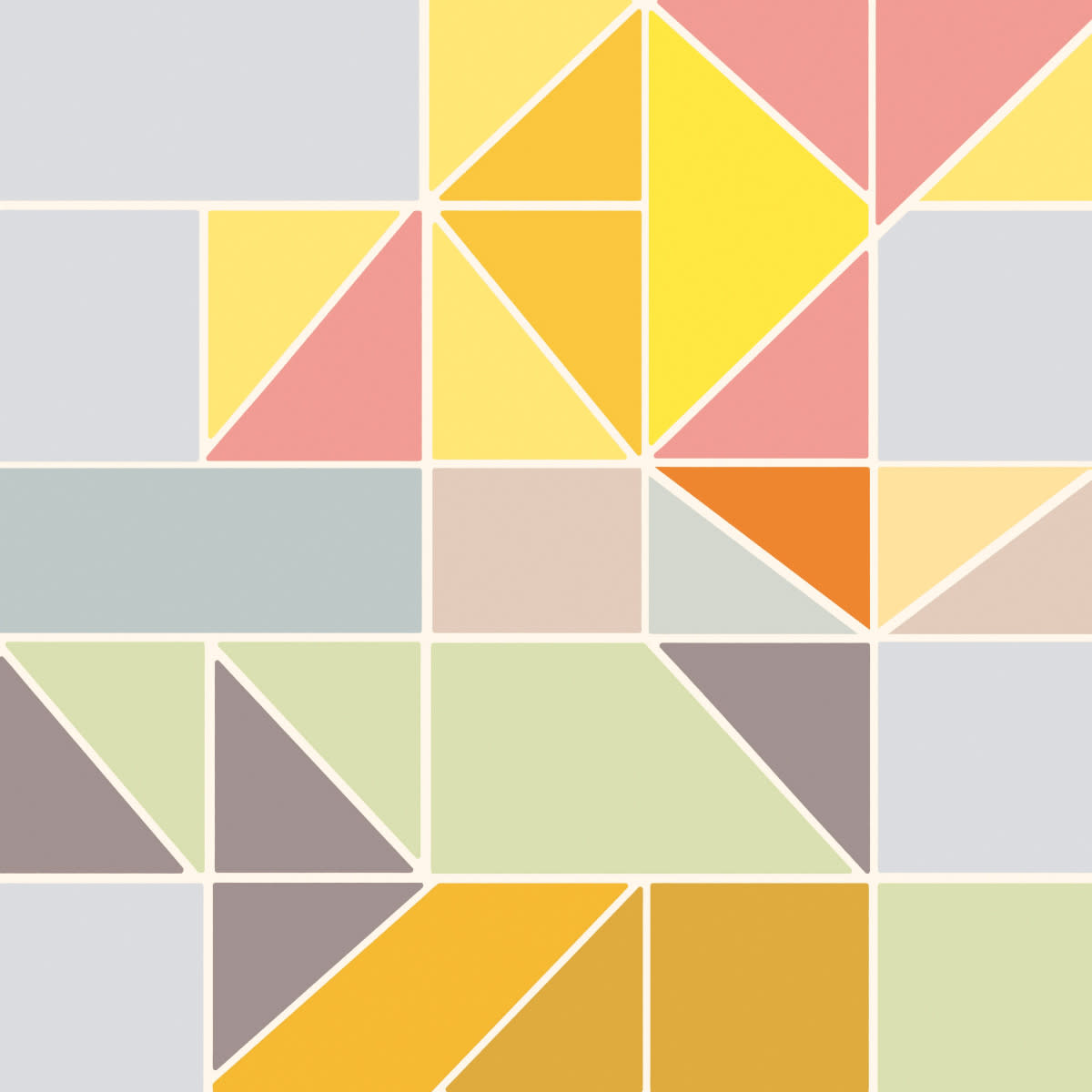Conversation: Tame Impala's Dom Simper on the maths of minimalism

Bambi (Dominic Simper) is a Perth-based musician, producer and touring member of Tame Impala since formation. His debut EP 'Unfolding' is out now on Spinning Top Records.
Dom, how’s life?
Yeah. Good, good. It's kind of just business as usual here. But things are good.
The EP came out a few days ago—how does that feel?
I feel a bit lighter, like the weight has been taken off my shoulders. I didn't really know how people would take it, given that it doesn't really sound like anything Tame has done. But everyone's been incredibly positive about it so far, which has been nice.
Was there something of a core idea behind these recordings?
In the second half of 2018 I was getting really into meditation and reading all these Buddhist texts. I attended a ten-day Vipassana retreat in Belgium, which is like a silent retreat. You wake up at 4:00AM, meditate the whole day, have one meal a day… it’s hard to talk about this stuff without getting into rather esoteric territory, but I just became aware of the undercurrent of the energy that is life and the patterns we immerse ourselves in. That’s the kind of energy I was trying to tap into through the EP.

Patterns as a music making device are interesting. You’ve mentioned before that visual artists like MC Escher were a big influence on your recordings. Was there any kind of mathematical formula applied to the works?
I love the music of Bach and piano music in particular, he just takes these simple melodic fragments and turns them upside down and backwards and overlaps them on top of each other. I love that layering of shapes. When you hear a harmony or melody that is chopped and looped around itself, it messes with your mind on a subconscious level. That's also
kind of where the Escher reference comes from—these impossible geometries that I'm interested in. I love symmetry as well. Do you know much about equal temperament?
kind of where the Escher reference comes from—these impossible geometries that I'm interested in. I love symmetry as well. Do you know much about equal temperament?
Nope, tell me more.
So the physics of music is based off mathematical ratios. Say you have an octave and an ‘A’ note running at 440 hertz, the ‘A’ in the octave above will be at 880 hertz, and every time you double the number you get the same pitch an octave higher. A perfect fifth is a ratio of 3:2 and, I can’t do maths at the top of my head, but if you have music in just intonation, it’s always a perfect mathematical sequence. But in order to arrange it so you can modulate between keys, the piano (or the Western Scale, as it’s known) is slightly out of tune, which opens the door to these coincidental harmonic results which you can exploit to create strange symmetries.
Do you believe in the 432 hertz myth? That a particular frequency is more in-tuned with nature than others?
I’ve heard of it, and I did go through a stage of experimenting with it years ago... but I don’t really buy into it. As far as I can tell, the actual frequencies are relatively arbitrary. But I absolutely understand the allure of such a theory.
Going back to sequences, that's something Phillip Glass was into, right? Like additive processes of notation through numbers. I don’t think he was even writing music, but just numbers that he assigned particular notes to, and then sequenced thereafter…
Yeah, it's fairly explored territory, particularly in the late-20th century. Steve Reich was into the phasing of chords and melodies on top of each other, slightly phased to that effect. John Cage wrote a lot about that too, composition as an abstract process separate to the music itself.
Basinski did that too with The Disintegration Loops. Do you think you're continuing this conversation in your work?
It’s not a deliberate thing. I don’t see my music making process as overly-intellectual or academic. I still love a good melody or the aspect of music that captures you without being able to explain why. Obviously you think about it a lot, but at the end of the day you have to let go of your rational brain in the process.
Which can inhibit you, right? Like, you want a level of perfection but it’s hard if the numbers don’t add up against your personal taste...
Yeah. It's also just a good launch pad. Instead of starting with a blank canvas, you can work with this concept to start your process of exploration. I see it as like one of those people you see at the beach with a metal detector, you go out there and you might find something, or you might not, but you have to let go of that control.
Anything can be rich if you pay close enough attention to it...something little done well can be enough.
- Dom Simper

Visual references are interesting too. Can you talk about how primarily visual art forms translate into your music?
I just think it’s such an under-explored part of the experience when you mix your senses. I get really frustrated in places that are well-designed and beautiful, but they’re playing horrible music or the smell is off. I love to be at the ocean because it's visually stunning and you can smell the salt in the air and feel the wind on your face and the touch of the sand. All of your senses come together as an experience. I feel like we often only cater to one of our senses instead of creating this fully coherent sensorial experience. So I like music matched perfectly with a physical space or a room. Like I'd love to get into installation spaces or even soundtracking. I was very influenced by a lot of film... have you seen the movie Valerie and her Week of Wonders?
No, where is it from?
I think it's Czech, but it's got this amazing beautiful and surreal soundtrack. A lot of French new-wave cinema like Éric Rohmer, even Godard and composers like Francis Lai, Georges Delerue… they used synths and orchestral sounds which is a big inspiration for the palette from which I drew.
Why do you think your primary references come from the early 20th century rather than more contemporary places? Do you think there was something unlocked then that we’ve lost now?
I think a lot of modern music is dependent on texture and instrumentation and is a lot more driven by rhythm and the beat, so to speak. I feel like harmony and melody has gone a bit to the wayside. That’s not to say I’m trying to drive some cultural shift, it’s just the music that interests me. You don’t have any control over where your heart takes you in terms of the things you love and the evolution of your taste over time. It’s out of your control. You’re just following where the path leads.
Another reference for the EP was a line from poet William Blake: ‘To see the world in a grain of sand’. Did you know that line plays a pivotal role in the first Tomb Raider movie?
Did it really?
It helps Lara Croft turn back time and save Daniel Craig.
I guess that line underpins a part of the way I see music and life in general; that sometimes less is more. Anything can be rich if you pay close enough attention to it. You don’t need to drown yourself in sensory inputs to have a core experience. It’s kind of like the minimalist philosophy—something little done well can can be enough.
I suppose a middle ground here is in Japanese new age music. Artists like Hiroshi Yoshimura, Midori Takada, Haroumi Hosono etc. all had really visceral album art and very evocative track titles. What were you taking inspiration from in that world?
Yeah, those records, and others like Still Way by Satoshi Ashikawa, are perfect examples of what I was talking about in environmental music. It’s about the relationship the music has with a physical space, like a room, or the way music weaves its way around the angles of a room to fill it up with energy. Those records of Japanese origin are about my relationship with music in a physical space.
The record reminded me of video games like Donkey Kong Country II: Diddy Kong’s Quest or Harvest Moon, which became quite renowned for their ambient soundtracks.
Yeah, that’s funny. There’s one track in Donkey Kong Country called Aquatic Ambience, which is amazing. A big part of my youth was playing Super Nintendo and Playstation but it wasn’t something that I actively drew inspiration from in my recording. But I imagine that it did tattoo itself on my brain in some way, just through how much I’d play them as a youth.
Can you explain the Weber Fechner principle?
Yeah, it ties back to what we were discussing earlier. It just means that the less that’s going on, the more perceptive we are to change. It’s the effect that change has on any physical stimulus in relation to the strength of the starting point, and the difference in how we might perceive it.

Which I guess leads to this decision of why you would release a record now?
There wasn’t much intention behind it. It took six months after I was finished it to even decide I wanted to release it. Then last year was just busy touring with Tame and moving back to Australia, then from there it was another six months of getting the art together and working with the label. But I guess…I don’t know if it fits in the world at the moment. There’s a lot of change in the air and this record is about stepping back and being introspective.
Does it make as much sense to you now, living in Australia, then when you recorded it in the Netherlands?
I think so. It’s different. A lot of it was inspired by the soft palette that you would get in a sunrise in the Netherlands—just this really hazy pink glow that we don’t get in Australia. One of the tracks is about sitting and watching the first snow outside of my living room. I wanted to capture a sense of that wonder, but we don’t really have it it as an Australian growing up here.
But we do have something. I grew up on the water and having that horizon to constantly come back to, and the nature of waves has had a subliminal impact on what I like visually. I don’t think Australian artists think about it as much as they should.
Definitely, 100%, just the kind of openness of Australian vistas. But it's not that we take them for granted, we just don’t realise how unique they are to this country.

I think it just means we use more reverb then everyone else. You mentioned the album art earlier, what was the process for that visual side of this record?
The album art ties together the sentiment behind the music. It’s quite geometric. You can look at it from a few different angles and hopefully it still makes sense. It’s supposed to resemble a stained glass window representing the soft European light I mentioned earlier. But I wanted it to be abstract. A lot of classical records had this very humble art that was quite minimal and clean, so that was the aesthetic I was going for. (Artist) Jeffrey Annert and I worked on it for about six months to capture it.
We’ve been exploring this word ‘Restless’ for a while, and I was curious to hear what that word means to you.
That word doesn’t not have any good connotations to it, but it’s antithetical to the stillness I try to find in life. And obviously [that stillness] is like a goal that you never actually reach, but it’s something that I haven’t quite figured out because the thesis of the album is that everything is always moving and dynamic. There is this undercurrent of energy, but a stillness in finding your sense of peace. It’s definitely different to the drive to be productive, or working towards goals. Restless means you’ve lost control of yourself. Your
brain is just feeding your thoughts faster than you can process them. To me, it just means you should probably go meditate or go for a walk or something.
brain is just feeding your thoughts faster than you can process them. To me, it just means you should probably go meditate or go for a walk or something.
'Unfolding' is out now via Spinning Top Records.